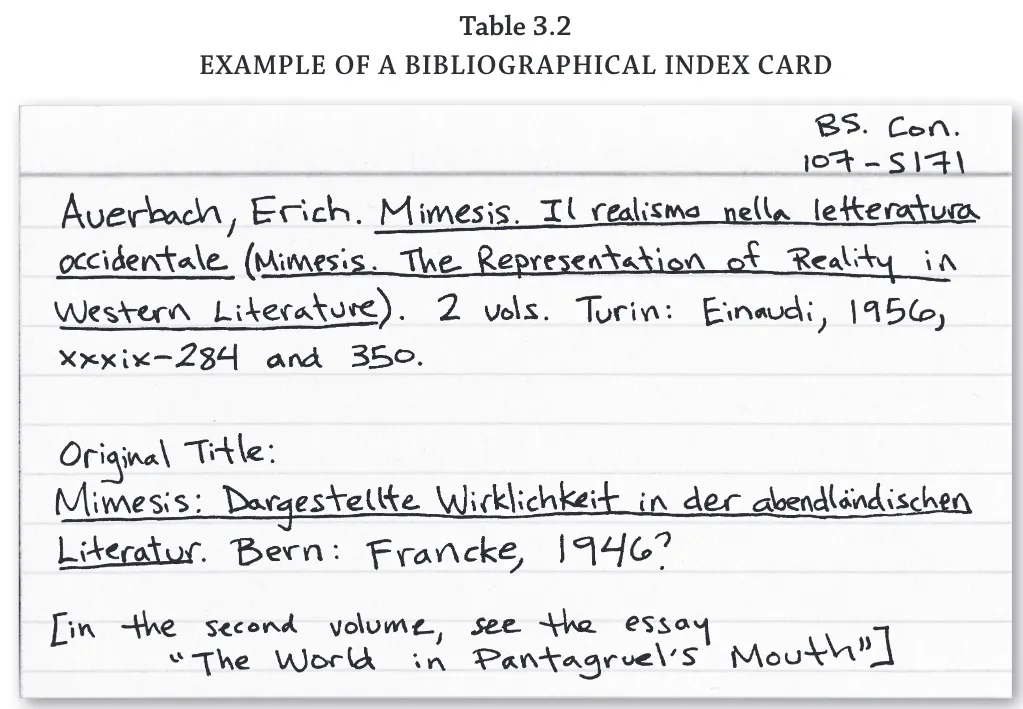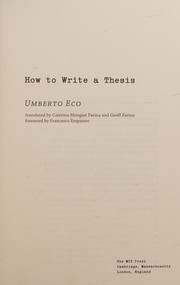How to Write a Thesis
NB, when referring to page numbers I will use following format: (p.,123), meaning I’m citing from page 123 of How to Write a Thesis.
What is a thesis?
In Umberto Eco’s words, thesis, dissertation, is a “manuscript, usually 100 to 400 pages in length, in which the student addresses a particular problem in his chosen field.”(p.,2). Because it is a original research, one must “discover”, say something new.
Writing a thesis can be useful after graduation. “Writing a thesis requires a student to organize ideas and data, to work methodically, and to build and “object” that in principle will serve others”(p.,6).
The topic of your essay must be as narrow as possible.(p.,16)
Writing a thesis should take no longer than three years and no less than six months.(p.,17)
About sources
“You must be able to clearly distinguish primary sources from critical literature.” (p.,46) Also, keep in mind that translation is not a primary/direct source.
“What you should never do is quote from an indirect source pretending that you have read the original.”(p.,52)
Compiling basic bibliography
Don’t immediately read every book when starting your research. Instead, “compile a basic bibliography of sources pertaining to your topic.”(p.,58)
Umberto suggests to create a bibliographical index card for each book. This will give you clear picture of the sources you have gathered. Collect these cards into a box.
“The virtue of the index card system is that you can easily reorganize the cards as the bibliography grows and changes, and your cards will always be in true alphabetical order.”(p.,60)
There are different types of index card files: readings file, the idea file, quote file. These types of cards and their application is discussed in chapter 4.

“Remember that an index card file is an investment that you make during your thesis, but if you intend to keep studying, it will pay off years—and sometimes decades—later.” (p.,122)
What to read?
“It seems to me the most sensible answer is this: approach two or three of the most general critical texts immediately, just to get an idea of the background against which your author moves.” (p.,104)
The research depends on the psychological structure of researcher.
Are you monochronic or polychronic person?
Monochronic vs polychronic
Umberto Eco writes:
There are monochronic people and poly chronic people. The monochronic succeed only if they work on one endeavor at a time. They cannot read while listening to music; they cannot interrupt a novel to begin another without losing the thread; at their worst, they are unable to have a conversation while they shave or put on their makeup. The polychronic are the exact opposite. They succeed only if they cultivate many interests simultaneously; if they dedicate themselves to only one venture, they fall prey to boredom. The monochronic are more methodical but often have little imagination. The polychronic seem more creative, but they are often messy and fickle. In the end, if you explore the biographies of great thinkers and writers, you will find that there were both polychronic and monochronic among them.
(p.,105)
The Table of Contents as a working hypothesis
Eco writes that the first thing you should do after finishing bibliographical research, is to create title, introduction, and table of contents. His advice is contrary to most authors who suggest to leave these things to the last moment. (p.,107)
When we speak about a working title, we actually mean “secret title” of the thesis is a title that usually appears as the subtitle.
The idea is that the table of contents will work as a working hypothesis. Writing out TOC doesn’t mean that the finished thesis will have this TOC. It’s just a starting point, a working plan.
On writing and style
“You are not Proust. Do not write long sentences.” (p.,147) and also “You are not e. e. cummings.”(p.,149)
- “Begin new paragraphs often.” (p.,151)
- Write whatever comes into your mind, but do that only in the first draft.
- You don’t have to start with the first chapter (p.,151)
Thesis as a challenge
- Writing a thesis should be fun
- Writing a thesis is like cooking a pig: nothing goes to waste (p.,221)
- You must experience the thesis as a challenge
- Sometimes, the thesis is a game of solitaire. Same metaphore was used by Gerald M. Weinberg in his book on writing Weinberg on Writing, read the summary here.
